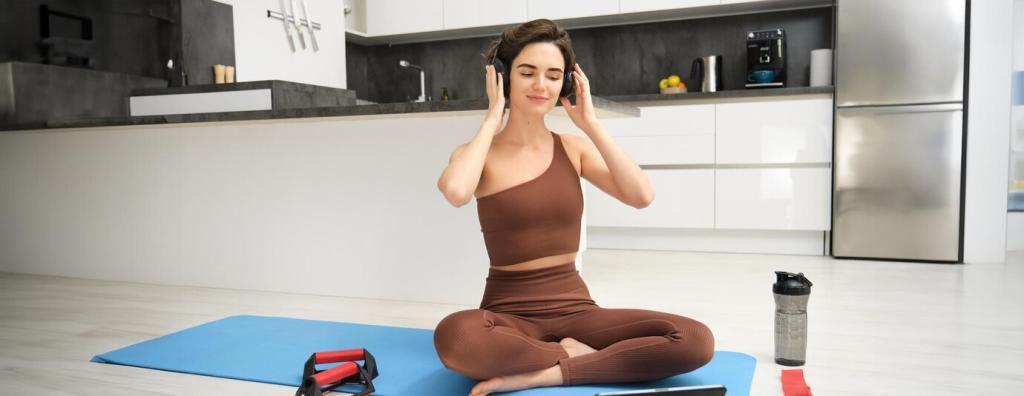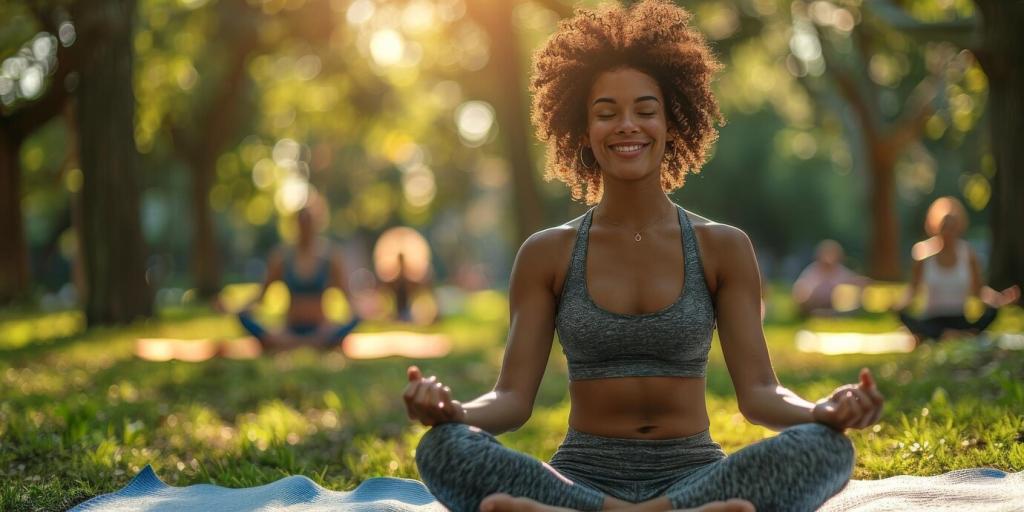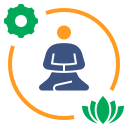Find Calm on the Mat: Yoga and Anxiety Relief
Chosen theme: Yoga and Anxiety Relief. Step into a welcoming space where breath, movement, and kindness help quiet spiraling thoughts. Together we’ll explore science-backed practices, warm stories, and gentle routines that invite steadiness, presence, and hope—one mindful inhale and exhale at a time.
The Science of Soothing
Slow, rhythmic breathing and mindful movement stimulate the vagus nerve, nudging the body toward the parasympathetic state where calm chemistry thrives. Research suggests yoga can elevate GABA levels, improve sleep quality, and enhance interoceptive awareness—skills that help you notice rising anxiety before it swells.
Stories from the Edges of Panic
Leah once kept a folded note in her pocket with simple cues: drop shoulders, lengthen exhale, child’s pose for five breaths. Before big presentations, she practiced quietly in a hallway. Over months, the ritual rewired her fear into focus and compassionate self-trust.
Your Invitation
If anxiety often ambushes you, start gently: two minutes of breath, two of movement, two of stillness. Tell us what moments feel hardest and which cues help. Share in the comments and subscribe for weekly practices rooted in Yoga and Anxiety Relief.
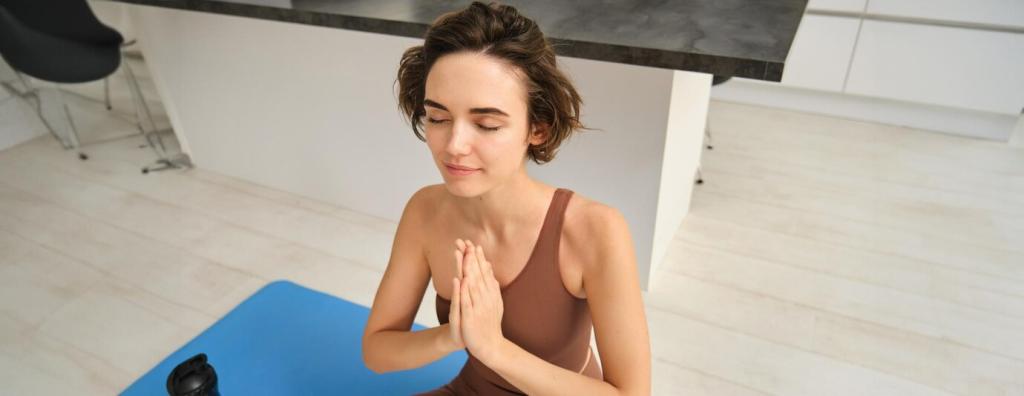
Breathwork Tools for Immediate Relief
01
Inhale through the nose for four counts, exhale for six to eight. Longer exhales signal safety to your nervous system. Keep the jaw soft, shoulders heavy, and gaze gentle. Try five rounds, then pause to notice shifts in chest tension and mental speed.
02
Close the lips, soften the face, and hum on the exhale like a calm bee. The vibration soothes the mind and lengthens the breath naturally. Use light ear closing if comfortable. Three to six rounds can melt noise into a grounded, centered hum.
03
This week, pick one technique and use it daily at the same time. Track sensations in a quick note: heart rate, restlessness, clarity. Share your observations in the comments and subscribe to get printable breath cards for Yoga and Anxiety Relief.
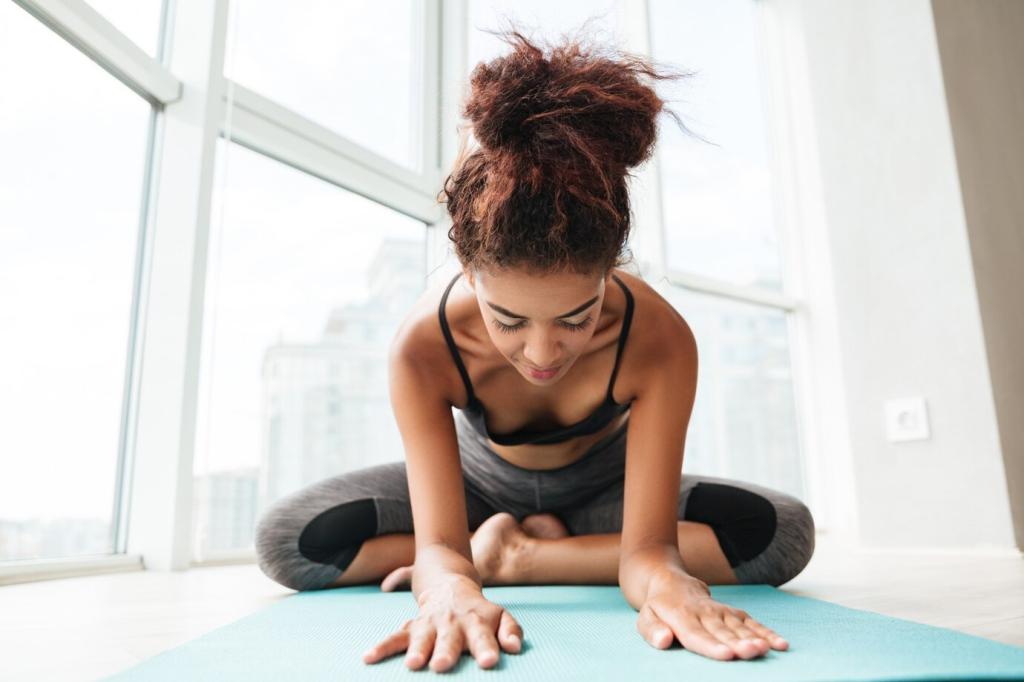
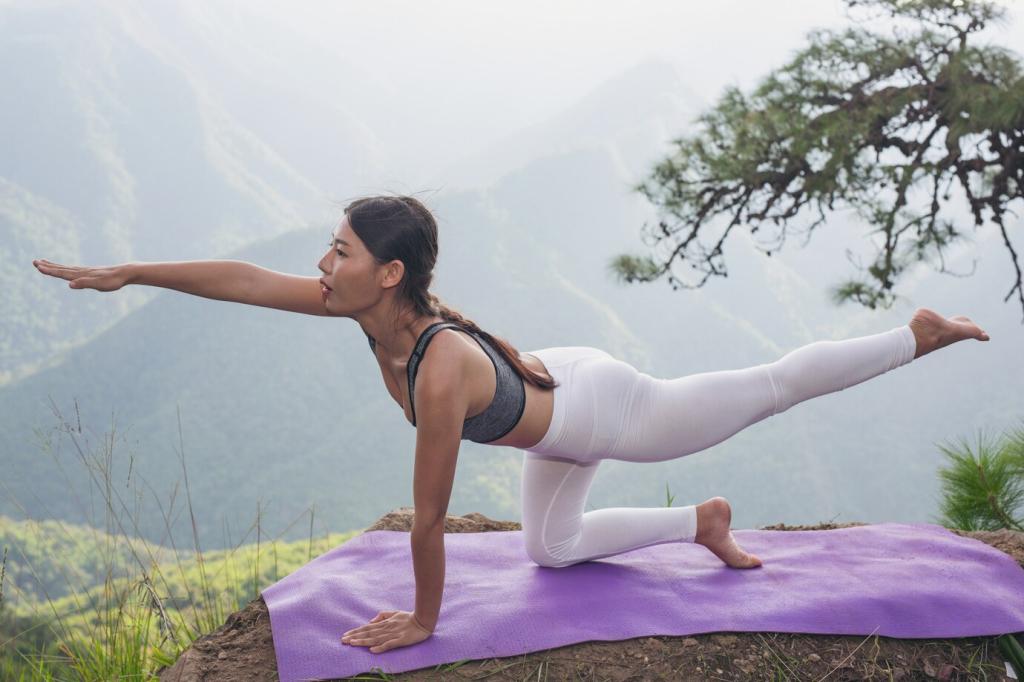
A Gentle 15-Minute Flow to Reset
Begin lying down with knees bent, one hand on your belly and one on your heart. Notice the floor holding you. Inhale through the nose, exhale like fogging a mirror. Three minutes of simple awareness can soften bracing and invite quiet safety within.
A Gentle 15-Minute Flow to Reset
Move through cat–cow, low lunge with gentle side bend, half splits, and a slow forward fold. Keep transitions unhurried, tethered to your breath. Imagine exhaling worry out through your back body, letting neck, jaw, and tongue un-grip with each wave.
Creating a Calming Space at Home
Light, Sound, Scent
Choose soft, indirect light and quiet ambient music without sharp crescendos. If scent helps, try a mild lavender or cedar; skip overpowering blends. Let your space be consistent, familiar, and uncluttered so your nervous system recognizes, “Here, I can exhale.”
Mat and Props That Hug You
A cushioned mat, folded blankets, and a firm pillow can transform poses into nurturing holds. No props? Use towels, books, and a couch cushion. The goal is steadiness, not athletic glory—support that whispers, “You’re held,” throughout Yoga and Anxiety Relief.
Consistency Ritual
Anchor practice to a cue: after brushing teeth, unroll the mat; after lunch, breathe for two minutes. End with the same closing phrase or bell each time. Share a photo of your nook with us, and subscribe for monthly space-tending checklists.
Yoga Off the Mat: Daily Micro-Resets
Commute Calm
At red lights, soften your gaze and practice box breathing: inhale four, hold four, exhale four, hold four. Notice hands on the wheel, feet on the floor. Let unclenching be your quiet commute companion when Yoga and Anxiety Relief rides shotgun.
Email Anxiety Antidote
Before replying to a charged message, try a 90-second reset: unclench jaw, relax tongue, breathe slowly, then twist gently in your chair. Ask, “What matters most?” Respond from steadiness, not urgency. Share your favorite micro-reset in the comments.
Sleep Switch
Two hours before bed, dim screens and try five minutes of legs-up-the-wall or diaphragmatic breathing. Jot down three safe actions for tomorrow. Let your pillow collect the lists; let your body hold the quiet. Subscribe for our Sunday night wind-down.
When to Seek Extra Support
If anxiety disrupts daily life, sleep stays broken, or panic attacks escalate, connect with a licensed professional. Yoga can complement clinical care, not replace it. If breath holds trigger distress, skip them and choose gentler, longer exhalations instead.
When to Seek Extra Support
Yoga can amplify CBT skills by improving body awareness and tolerance of sensation. Track triggers and helpful poses in a journal to discuss with your therapist. Co-design practices that feel safe, trauma-informed, and aligned with your healing plan.
